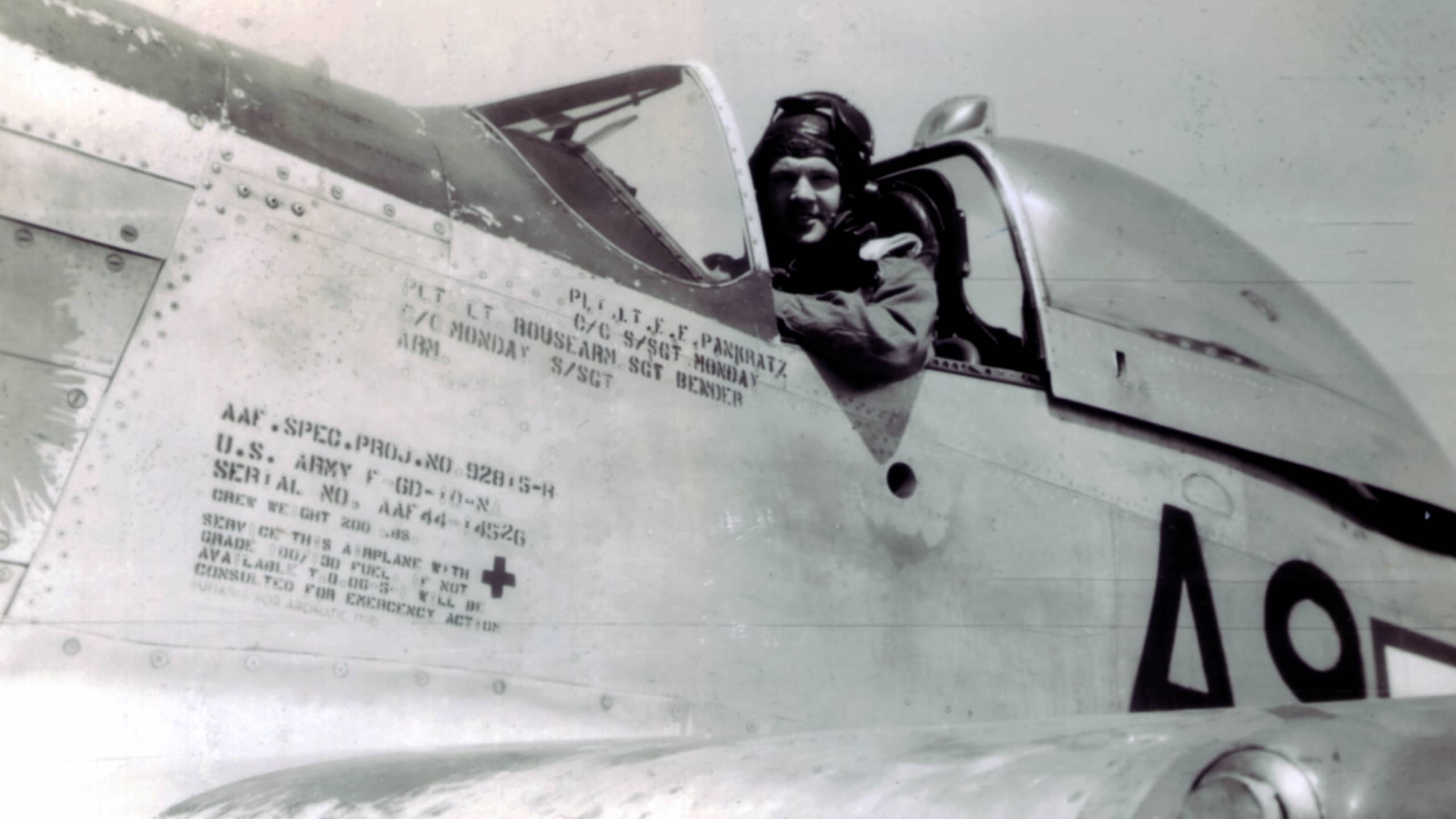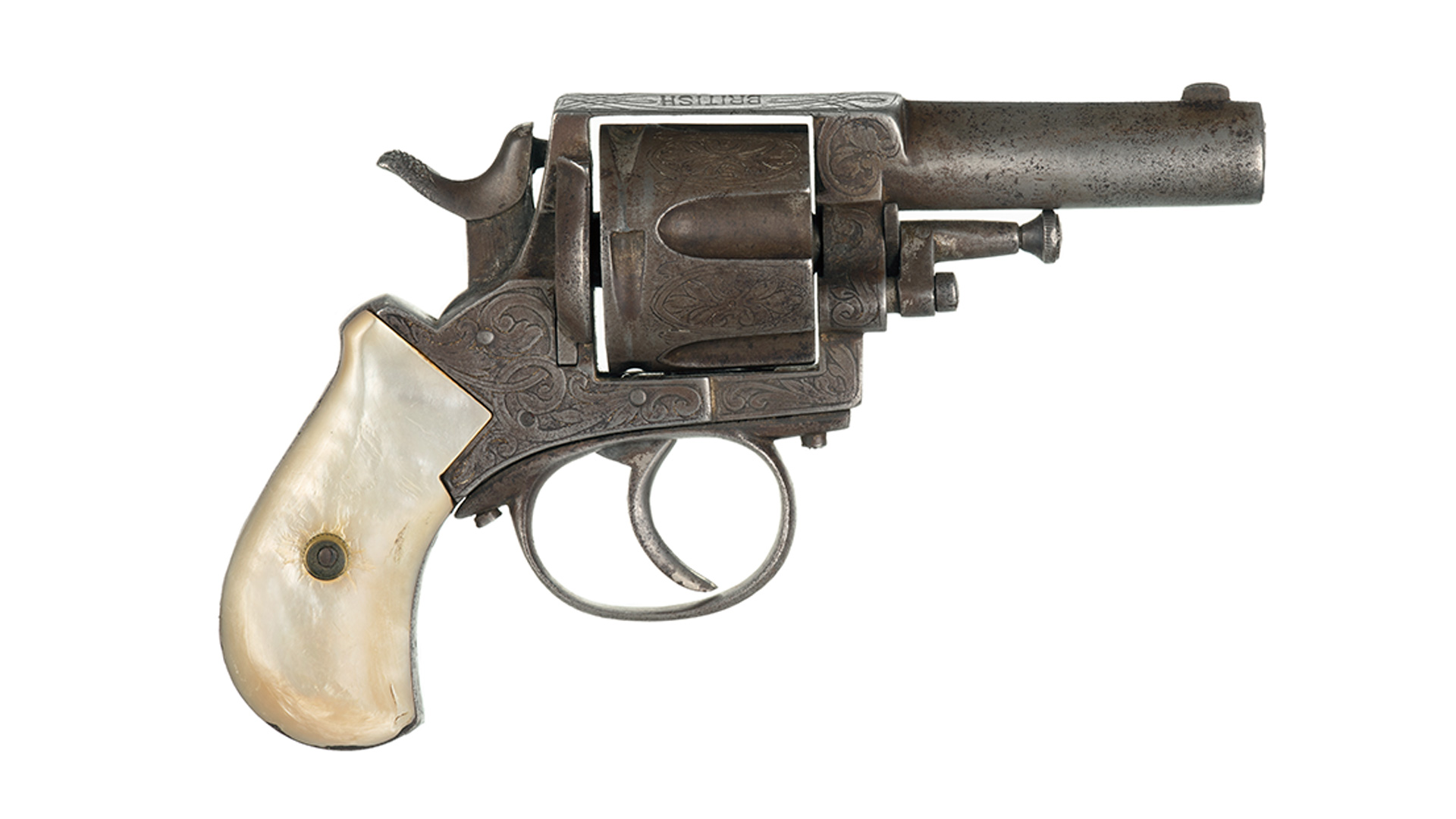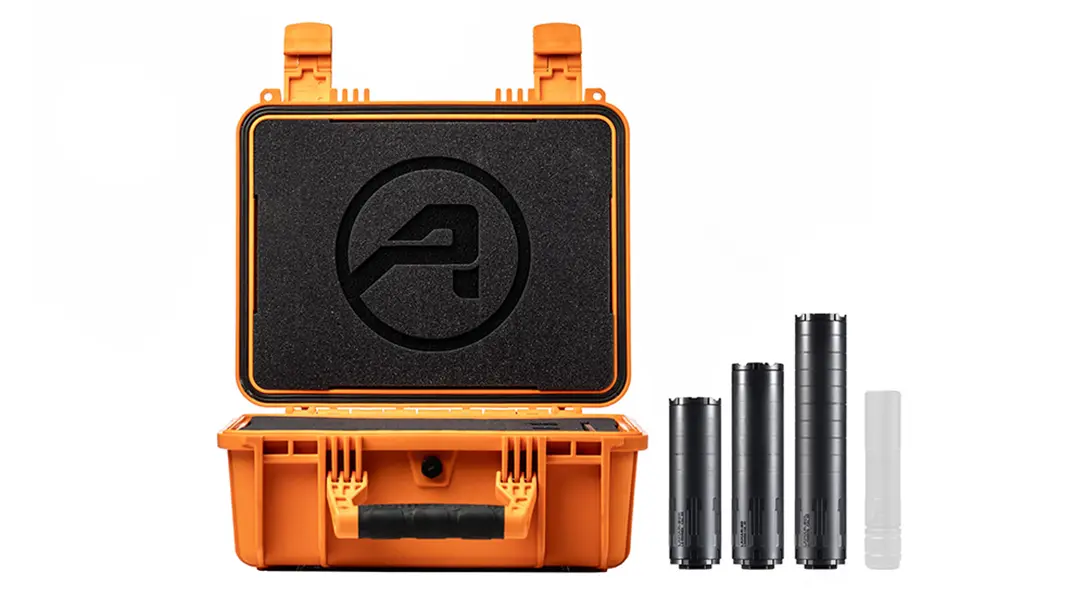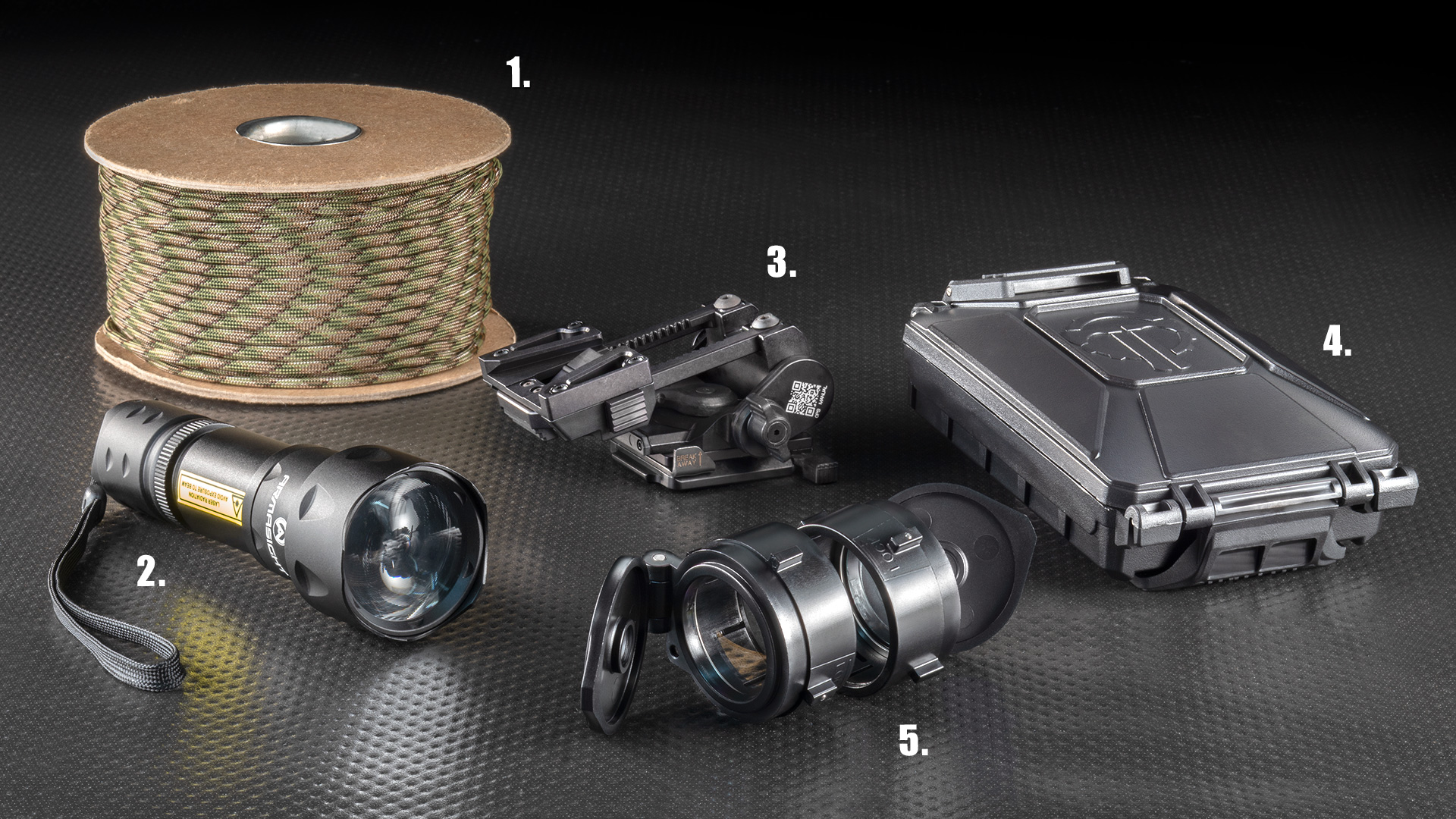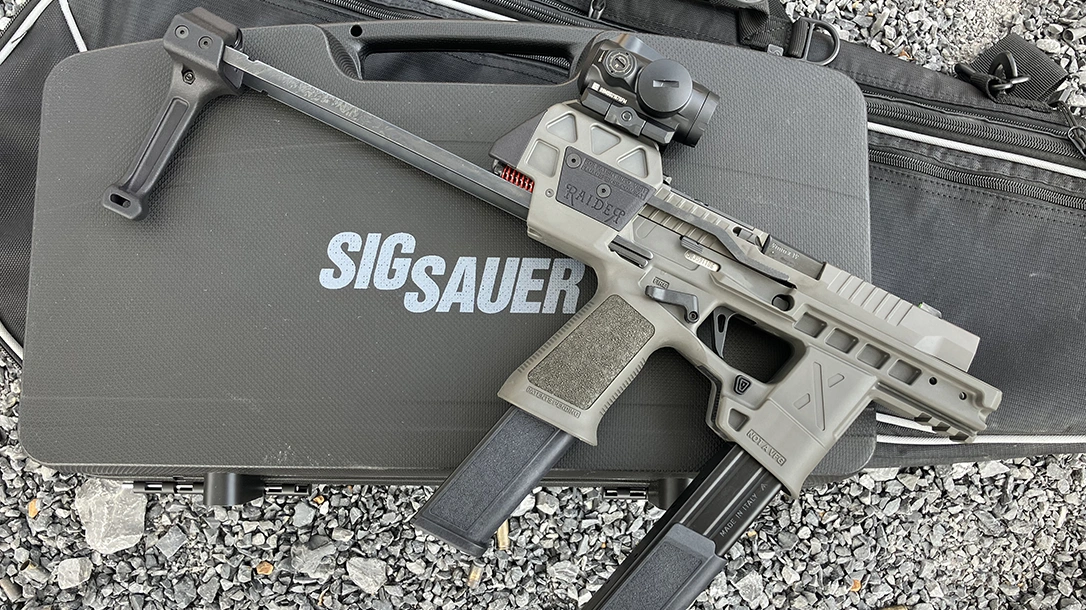Clash of the Cutting-Edge Carbines

Colt kicked off the rifle-caliber carbine party in the early 1960’s with their Model 607. The Colt Model 607 looks like you took an early AR-15 rifle and squished it front to back in a vise. The abbreviated triangular handguards were made from standard M16 furniture cut in half, and the weird sliding, solid buttstock rendered the gun fairly back-heavy. However, the 607 started a fire that burns brightly to this very day. Let’s look at three cutting-edge carbines that, in their full-auto glory, keep that fire burning.
3 of the Most Cutting-Edge Carbines of All-Time!
Coming out of WW2, the pistol-caliber submachine gun seemed the wave of the future. Soft-shooting, cheap to produce, and easy to use, 9mm SMGs could be found everyplace people tried to kill each other. Then in 1965, Colt bodged together around fifty of those 5.56mm Model 607 carbines as a speculative venture, and the whole world shifted just a little bit.
Rifle-caliber carbines had the benefit of sharing a great deal of parts commonality with their parent rifles. They also fired the same ammunition. That generational similarity simplified training as well. However, the resulting muzzle blast when firing standard 5.56mm rounds through a barrel as short as 10 inches would part your hair and clear your sinuses. Uncle Sam fell madly in love with them.
The Model 607 morphed into the Colt 609 and 610, universally referred to in-country in Vietnam as the CAR15. The CAR15 eventually evolved into the M4 carbine. Now half a century later, the M4 is literally everywhere.
Not wanting to miss out on the party, the Russians got in on that action in the early 1970’s with the AKS-74U. This stubby carbine version of the AK-74 assault rifle did the same thing the CAR15 did only different. With this as a foundation, gun technology charged into the Information Age apace.
Nowadays, stubby rifle-caliber carbines equip military and Law Enforcement units around the globe. Often enhanced with sound suppressors to help mitigate the muzzle chaos, these advanced weapons feature ample mounting space for optics and lights as well as optimized ergonomics. We thought it might be a fun exercise to do a hands-on review of three of the most advanced of the genre. In no particular order…
The HK G36C

The G36 was developed by Heckler and Koch in the early 1990’s as a replacement for the German G3 in Bundeswehr service following the fall of the Iron Curtain. Featuring a short-stroke, gas piston-driven design and polymer chassis, the G36 is lightweight and maneuverable. It is also fully ambidextrous and modular. The weapon is offered in rifle, carbine, and submachine gun versions along with a heavy-barreled support variant. The G36C feeds from a 30-round polymer magazine, sports a free-floated 9-inch barrel, and weighs 6.2 pounds.
Up close, the G36C is a sleek and sexy room-clearing beast. The magazine well is replaceable, allowing the use of either proprietary G36 magazines or the STANAG M4 sort. The standard magazine release is a thumb lever on the midline. The fire controls are bilateral. The charging handle is a weird spring-loaded lever that is easily accessed from either side. This lever reciprocates with the bolt, but it is tucked along the midline so it doesn’t bump into anything. The side-folding stock is intuitive and comes in two different lengths.

Recoil is never an issue with 5.56mm weapons. However, they do typically exhibit unique full-auto personalities. The G36C cycles fairly quickly at 750 rounds per minute. While muzzle climb is easily manageable with proper technique, that is fairly fast. Short bursts require a responsive trigger finger and attention to detail. Additionally, there have been some well-documented complaints about accuracy degradation when these guns get hot. However, for the sorts of spaces where these little carbines typically operate, that shouldn’t be a terribly big deal.
The HK416

The HK416 was developed as a collaborative effort between Heckler and Koch and the US Army’s Delta Force in the early 1990’s. Incorporating the short-stroke, gas piston-driven action of the Armalite AR180 into the familiar chassis of the M4 carbine, the HK416 raised the bar on reliability while offered arguably perfect ergonomics. With an empty weight of more than seven pounds, the HK416 can get a bit portly once you add a sound suppressor, optics, and forearm accessories.
The AR-15 upon which the HK416 was based is the most versatile and modular firearm ever contrived by man. The design incorporates a buffer system that reciprocates into the buttstock. The factory gun cycles at a fairly blistering 850 rounds per minute on full auto. This seems surprisingly fast the first time you light one off. However, by using a heavier buffer, the gun’s rate of fire can be reduced. As I find slower automatic weapons to be more readily controllable than the faster sort, I sourced the heaviest buffer I could find. This drops the cyclic rate down to around 700 rpm.
HK416 Details

The HK416 is a bit front heavy, particularly with a suppressor installed. This makes the short-barreled version eminently controllable, particularly in confined spaces. Barrels are not readily exchangeable at the user level, but they are offered in several different lengths from the factory. The most popular CQB version sports a 10.4-inch tube.
The ergonomics of the AR platform set the standard for everything else. The HK416 uses an M4 charging handle and incorporates the same magazine release and bolt catch as the legacy gun. A properly-trained operator can swap out magazines on the 416 in less time than it takes to describe. A seasoned shooter can write his name with an HK416 on full auto, particularly with the heavier buffer. The piston-driven design keeps the receivers nice and clean and is easily maintained, even in austere environments.
The SCAR16

The FN Special Operations Forces Combat Assault Rifle was developed in 2004 and has the coolest gun name ever imagined. A thoroughly modular design, the SCAR16 fires 5.56mm, while the SCAR17 is 7.62 NATO. The receivers of these two weapons are not interchangeable.
The SCAR16 orbits around an extruded aluminum chassis with polymer particulars. The side-folding buttstock is more complicated than the human female, but it is easily adjustable for both length of pull and comb height. Like the G36 and HK416, the SCAR operates via the short-stroke, gas piston-driven action. Though this design is incrementally heavier than the simpler direct gas impingement system of the original M4, it is markedly cleaner, more reliable, and less maintenance-intensive. It is also clearly the wave of the future.
Unlike the G36 and HK416, the SCAR16 features a readily-interchangeable barrel system. The barrels can be exchanged between lengths and appropriate calibers at the user level with nothing fancier than a hex wrench. The carbine-length barrel is ten inches long and includes a manually-adjustable gas system.
SCAR Details

The fire controls and magazine release on the SCAR16 are fully ambidextrous. The bolt catch is left side-only and located in the same spot as that of the M4. The rigid charging handle is readily reversible. On early versions of the gun this appendage reciprocated with the bolt. This allowed the action to be manually manipulated in the unlikely event of a stoppage. However, there was a not-zero probability that it could rap your knuckles, particularly when moving fast. Later versions of the gun incorporate a non-reciprocating design.
At 7.3 pounds, the SCAR16 is a bit heavier than the G36. However, the cyclic rate is fairly comatose at between 600 and 650 rounds per minute. This is faster than a Sten, Grease Gun, or MP40 but slower than an M2 carbine, M4, or Uzi. The SCAR16 is my favorite recreational full-auto carbine as a result. The combination of the manly aluminum construction and sedate rate of fire synergistically combine to make the gun exceptionally controllable on rock and roll. The SCAR also has the added benefit of being the only one of the three guns evaluated that is actually readily available in semi-auto form to American civilian shooters, albeit at an astronomical price.
Ruminations
Each of these three full-auto carbines has certain relative strengths. The G36 is the lightest and easiest to carry. The SCAR16, with its bradycardic rate of fire, is hands-down the most fun. The HK416 interfaces with the human form like your favorite pair of broken-in Levis. Each has much to commend it.
It has been said that men really only think about three things—how to survive the zombie apocalypse, ancient Rome, and scantily-clad women. Though I would love to take issue with that allegation, it is lamentably fairly accurate. As a result, whenever two or more gun nerds are gathered together, the conversation invariably gravitates toward, “What would you use if you were called upon to survive the zombie plague in ancient Rome alongside the Dallas Cowboys Cheerleaders?”
That’s admittedly a pretty stupid question. Zombies and time machines are not technically real, and I am a 58-year-old gray-haired Army veteran with chronic low back pain. The only emotion I might conjure from a group of hot cheerleaders these days is pity or perhaps bemusement. Regardless, if ever I had to face the undead Roman hordes, I’d pick the HK416, particularly after I had slipped in my favorite heavy buffer. Compact, utterly reliable, and pure unfiltered death at bad breath ranges, if it is good enough for Delta Force, I suppose it is good enough for me.
Technical Specifications
| HK G36C | HK416 | FN SCAR 16 | |
| Caliber | 5.56mm | 5.56mm | 5.56mm |
| Barrel Length | 9 inches | 10.4 inches | 10 inches |
| Overall Length | 19.72/28.3 inches | 27.6/31.4 inches | 31 inches |
| Weight | 6.2 pounds | 8 pounds | 7.2 pounds |
| Rate of Fire | 750 rpm | 850 rpm | 650 rpm |


